Today’s most competitive eCommerce brands don’t guess, they don’t act.
They anticipate.
They can tell which customers are going to churn, which SKUs are going to slump next week, and how that localized Instagram ad campaign will affect Toronto’s inventory levels. That’s not intuition, that’s the effect of AI-powered predictive analytics in eCommerce.
Predictive analytics in eCommerce isn’t just a trend, it’s an infrastructure. It’s what differentiates companies that wish their customers convert from the ones that know who will convert, when, and at what price point.
Fundamentally, predictive analytics is about converting data into foresight. It’s about being able to infer intent, reveal risk, optimize resource allocation, and influence customer journeys in real-time. Done well, it doesn’t simply drive marginal gains, it redefines the way growth is executed across marketing, product, inventory, and support.
In 2025, if you’re not leveraging predictive analytics at every touchpoint, from marketing to inventory planning to checkout; you’re not just behind. You’re bleeding margin and misreading your customers at scale. Want to know how to get started? Check out our eCommerce app development guide for a complete roadmap.
This blog’s not another buzzword summary. It’s a strategic dive on how predictive analytics for the eCommerce sector really does it, data pipelines, models, applications, and results. And real-life examples from the brands that implement it to maximize CLV, minimize churn, and get operationally ahead.
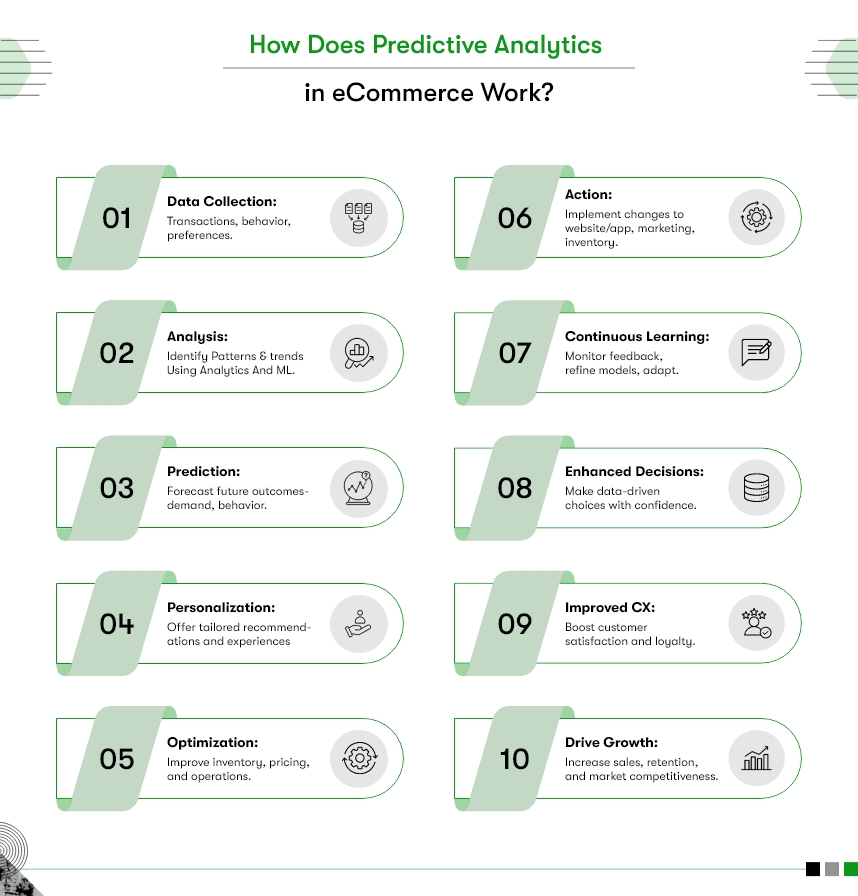
What does Predictive Analytics in eCommerce really look like?
Too many teams toss around “predictive analytics” as if it were a magic coin you flip. It’s not. It’s a system, a collection of models, pipelines, and decision layers that work in collaboration to forecast outcomes with sufficient accuracy to take action on them.
In eCommerce, predictive analytics isn’t one thing. It’s many things working in sync:
- A churn model flagging high-risk customers behind the scenes of your CRM
- A demand forecast adjusting your reorder schedule on a per-SKU basis
- A dynamic pricing engine recalibrating price elasticity based on competitor movement
- A personalization layer re-ranking your product feed in real time based on micro-intent signals
Why eCommerce Brands Need a Smart Recommendation Engine
Understanding how Product Recommendation Engines Work helps eCommerce brands boost conversions, personalize shopping journeys, and increase average order value without adding complexity.
Every use case draws on distinct data, employs distinct models, and generates distinct outcomes. But the thread that runs through them all is this- you cease to guess and begin to act on probability-weighted foresight.
What you’re about to read isn’t an overview, it’s an operator’s teardown. Actual predictive analytics, dissected by what it takes to put in and what you get out in return.
Fact: Fast-growing companies generate 40% more revenue from personalization than slower-growing competitors. (Mckinsey)
How Is Predictive Analytics for the eCommerce Industry Actually Applied in Practice?
Predictive analytics in eCommerce is not a plug-and-play dashboard or an item in your Martech budget; it’s a set of tightly integrated systems that drive decisions throughout your business. From inventory management to customer retention, the benefit of predictive analytics to the eCommerce world is how thoroughly it’s embedded in workflows, rather than how compelling the models read on paper.
The following use case examples deconstruct how high-performing eCommerce companies execute predictive analytics at a strategic level, what information they utilize, the way the models are created, and what business results they indeed produce.
This isn’t abstract theory, it’s actual architecture behind scalable, intelligent expansion.
Let’s look at the most popular use cases of PA in eCommerce:
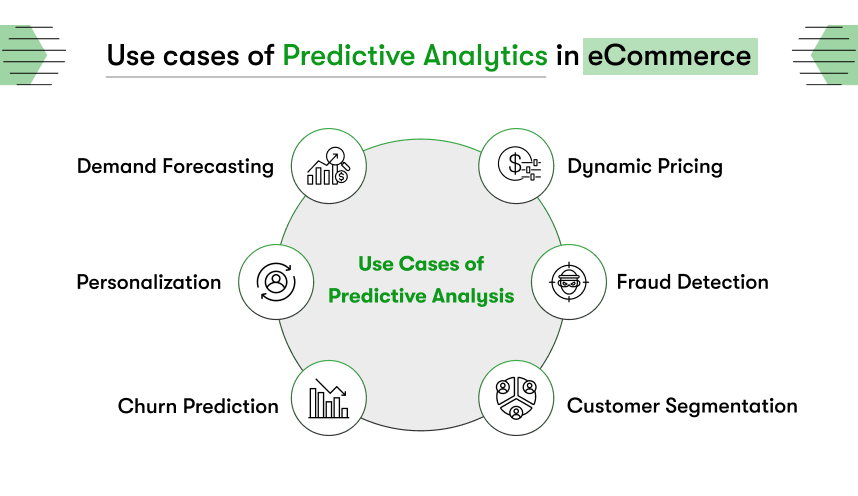
Demand Forecasting with Predictive Analytics in eCommerce
Traditional demand forecasting in retail was based on past performances and gut feel. That system collapses quickly in eCommerce, where inventory turns are quicker, consumer behavior changes day by day, and even minor misestimates will cost thousands in overstock or lost sales.
Predictive Analytics addresses this by applying machine learning to predict demand at a detailed level, by SKU, by channel, by region, and even by customer segment. The distinction is not merely accuracy; it’s agility and detail.
How it works:
At a technical level, modern product demand forecasting engines for eCommerce use:
- Time-series models (ARIMA, Prophet, LSTM) to capture seasonality, trend, and event-driven spikes.
- Regression models that include dozens of features like marketing campaigns, ad spend, social sentiment, competitor pricing, and even local weather.
- Hierarchical forecasting includes predicting demand across product categories, then reconciling that with SKU-level forecasts.
These models ingest both structured and unstructured data: product velocity, promo schedules, cart abandonment trends, traffic surges from UGC or influencer mentions, warehouse-level fulfillment delays.
This isn’t about “more data = better forecast.” It’s about building a feature pipeline that aligns with your actual inventory and fulfillment constraints.
This is typically achieved via a real-time dashboard, integrated with the eCommerce backend and supply chain systems, so that teams can act on the data, not merely observe it.
Strategic Impact:
- Reduced stockouts: Predictive models adjust for spikes in demand (e.g., viral TikTok post) before they happen, not after.
- Lower carrying costs: Excess inventory is minimized because you’re forecasting demand by channel, not just blanket totals.
- Faster decision-making: Automated alerts when a forecasted demand delta exceeds X% help teams prioritize SKUs with actual revenue risk.
In brief, this is not a plug-in functionality. It’s a fundamental layer in data-driven inventory planning that is the difference between margin expansion and a fire sale.
Learn how Dynamic Pricing in eCommerce adapts to demand in real time.
Personalization with Predictive Analytics in eCommerce
Personalization in eCommerce is usually boiled down to “people who bought X also bought Y.” That’s reactive and static. True personalization applies predictive analytics to customize each interaction according to individual intent, behavioral probability, and contextually relevant relevance in real time. Personalized product suggestions are the most prevalent yet useful approach. Amazon sales are brought in by 35% with product recommendations and 75% of what audiences view on Netflix.
Through the power of machine learning and behavioral modeling, eCommerce websites can anticipate what a customer will most likely consume next, not only on past purchases, but on session real-time signals and micro-intent indicators. What this does is provide an exceptionally dynamic shopping experience that refreshes per user, per session, across devices and touchpoints.
How it works:
At a technical level, personalization engines built on predictive analytics use:
- Collaborative filtering: Matrix factorization to identify users with similar behavior patterns.
- Content-based filtering: Matching products to a user’s interest based on metadata and historical affinity.
- Session-based models: RNNs and attention-based architectures that account for short-term intent spikes, especially in anonymous sessions.
- Hybrid recommenders: Merge long-term user profiles with real-time session data for ranked product delivery.
The system ingests a mix of structured and unstructured inputs: Clickstream behavior and scroll velocity, time-on-page, bounce rate and product interactions, search query refinement patterns, Wishlist and add-to-cart behavior without purchase, geo, device, traffic source, and seasonality.
Step-by-Step Guide to Using Predictive Analytics to Reduce Cart Abandonment
Strategic Impact:
- Increased conversion rates: Relevance of products enhances first-click-to-buy ratio, particularly on mobile.
- Enhanced AOV: Upsells and cross-sells are derived from high-probability co-interest, not category reasoning.
- Retention lift: Return visits have more personalized journeys, boosting engagement and LTV.
This isn’t personalization as a feature, it’s personalization as infrastructure. It aligns inventory exposure with real demand, in real time, at the individual level.

Churn Prediction with Predictive Analytics in eCommerce
Most brands realize churn too late, after they’ve lost the customer, missed the promotion, and failed to re-engage. Predictive analytics turns this around. It tells you which customers will churn, when, and why! So that you can step in before they are out of reach.
Instead of one-size-fits-all win-back efforts, predictive churn models provide you with segmented risk scores for churn, which you can use to trigger targeted, automated retention flows.
How it works:
Modern churn modeling for eCommerce uses:
- Binary classification models like Logistic Regression, Random Forest, XGBoost; trained on labeled churn/no-churn outcomes.
- Survival analysis for time-to-churn prediction in subscriptions or high-frequency verticals.
- Sequential modeling that includes lag features and engagement decay curves.
These models are fed a wide variety of signals: last purchase and session timestamps, change in order frequency or basket size, engagement decay, refunds, negative reviews, or canceled support tickets, and behavioral shifts. The model assigns each user a churn probability score and, optionally, a “days to churn” estimate.
Strategic Impact:
- Lower churn rate: The system delivers targeted reactivation strategies to high-risk users before they drop off, using methods proven to work.
- Increased retention ROI: Less waste in “spray-and-pray” discounts or across-the-board loyalty pushes.
- More intelligent segmentation: Marketing and product teams utilize risk scores to streamline feature rollouts, loyalty points, or concierge service.
Churn prediction allows you to defend revenue before it’s gone. It’s an attack mindset in an industry that typically plays defense. Use Predictive Churn Modeling in eCommerce to identify customers likely to drop off and win them back before they leave.
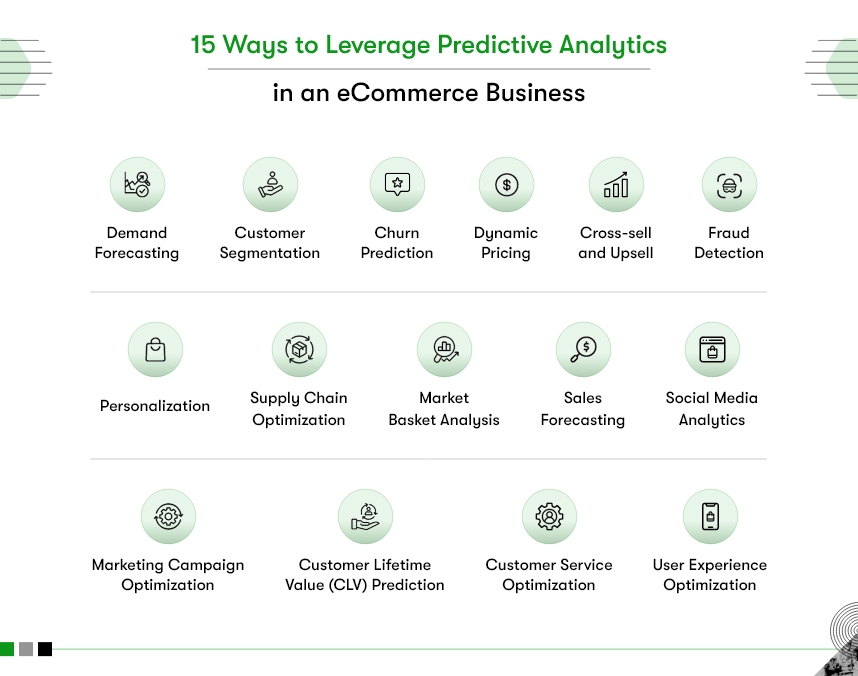
Dynamic Pricing with Predictive Analytics in eCommerce
You don’t need to fix your pricing when inputs like demand, competition, and inventory shift daily. Predictive analytics supports dynamic pricing systems that adjust in real-time based on internal and external signals, maximizing margin, conversion, or inventory velocity.
Rather than using category rules or calendar event-based discounts to control pricing, brands leverage ML-driven models today to calculate best price points at the SKU level, sometimes by channel or user segment.
How it works:
At a technical level, dynamic pricing systems employ:
- Elasticity modeling: Regression-based models estimating demand sensitivity to price movements.
- Multi-armed bandits or reinforcement learning: Experiment and converge on best price strategies.
- Time-series overlays: Predicting future sales at different price levels to dynamically adjust pricing.
Input features typically include historical sales at various price points, inventory turnover velocity, competitor pricing and price gaps, promo responsiveness by segment, day of week, time of day, seasonal tags.
Advanced implementations also include real-time data ingestion from competitor scrapers, conversion rate shifts by channel, and LTV predictions.
Strategic Impact:
- Better margin: Maximize profitability on low-elasticity SKUs.
- Faster sell-through: Sell slow-moving stock without sitewide promotions.
- Competitive responsiveness: Real-time pricing allows you to remain responsive to external market fluctuations without human bottlenecks.
It’s not a matter of changing prices every day, it’s a matter of changing prices wisely, data-driven, without guesswork.
Looking for an eCommerce predictive analytics consulting company? We reduce churn and boost sales with AI-powered insights & forecasting.
Fraud Detection with Predictive Analytics in eCommerce
Fraudsters are quick to change. Rules that are static are not. Predictive analytics provides you with the power to recognize anomalous behavior patterns in real time, highlighting risky users and transactions ahead of harm caused by false positives drowning your conversion pipeline.
How to Implement Predictive Analytics for eCommerce Fraud Prevention?
Machine learning-powered fraud detection actively identifies past fraud and highlights behavior that resembles fraud as it happens.
How it works:
Fraud detection models for eCommerce use:
- Anomaly detection algorithms: Isolation Forest, One-Class SVM for unsupervised pattern identification.
- Supervised classification: Trained on historical fraud vs. clean data.
- Behavioral fingerprinting: Track typing cadence, device IDs, repeat transaction velocity.
Input signals include: Unusual IP or geolocation shifts, shipping address vs billing address mismatch, device fingerprint vs account history, session behaviors, payment method rotation or velocity.
Strategic Impact:
- Lower chargeback rates: Machine learning identifies types of fraud that rule-based systems fail to pick up.
- Fewer false declines: Legitimate customers aren’t denied for frivolous, outdated static rules.
- Operational scalability: Fraud team examines only the riskiest 0.1%, not 10% of transactions.
This is how you scale trust in a system where each bad transaction incurs margin and reputation loss.

Customer Segmentation with Predictive Analytics in eCommerce
Static segmentation is obsolete the instant you click “publish.” Predictive segmentation redefines customer cohorts in real-time, on the basis of behavior, value, and intent, fueling smarter decisions within acquisition, retention, and personalization systems.
Rather than segmenting customers into pre-defined personas, machine learning discovers emerging patterns and adaptive clusters based on what users do.
How it works:
Predictive segmentation typically involves:
- Clustering algorithms: K-Means, DBSCAN, or Gaussian Mixture Models to group users by multi-dimensional similarity.
- RFM analysis augmented with ML: Recency, Frequency, Monetary models enhanced with behavioral modeling.
- Autoencoders and embedding models: Reduce dimensionality of complex user behaviors into clusterable vectors.
Input data sources: Order frequency & spend velocity, product category affinity, campaign engagement, on-site behaviors, support tickets or CSAT scores.
Strategic Impact:
- More ROI per campaign: Messaging resonates with relevance since it aligns with real behavior.
- More LTV segmentation depth: Spend more on high-velocity cohorts, keep cost in check on churn-prone ones.
- More intelligent product feedback loops: Product teams can develop features or flows optimized to data-driven cohorts.
Predictive segmentation isn’t list slicing, its people understanding. Then applying that understanding to shift the right metric at the right time.
What are some top brands that are using Predictive Analytics in eCommerce?
Reading how actual businesses deploy predictive analytics at scale makes it all feel much more real. No vague case studies, no marketing exaggerations, just solid examples of how predictive models get integrated into operations to derive measurable results.
From inventory management to hyper-targeted customer paths, here’s how top eCommerce players are putting predictive analytics squarely at the forefront of their business strategy.
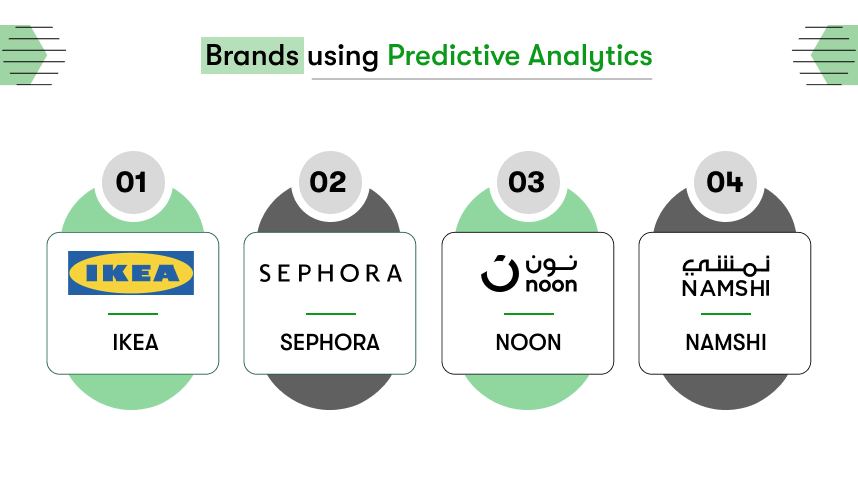
IKEA: Data-Driven Design, Inventory, and Regional Demand Planning
IKEA isn’t only optimizing for aesthetics; they’re optimizing for regional demand correctness at the point of development stage. The corporation employs predictive modeling to examine prior sales, locally focused product popularity, seasonality patterns, and even regional tastes to predict which types of products will sell best within particular markets.
Want to develop an app like IKEA? You’ll need more than just great design. IKEA actively uses hierarchical demand forecasting models to optimize inventories at each warehouse. These models feed store traffic data, online search patterns, and even the assembly timelines of products to synchronize logistics and supply chain choices. This enables them to cut back overstocking, prevent supply shortages, and roll out new product lines with more confidence and quicker turnaround.
Sephora: Personalization at Scale and Inventory Forecasting for Beauty SKUs
Sephora is arguably the most forward-thinking eCommerce in predictive personalization. Their predictive models examine the intersection of clickstream activity, purchase history, skin concerns, and seasonal influence to create user-specific real-time product recommendations. Want to know how to develop a shopping app like Sephora?
They deploy a hybrid architecture for recommender systems that has collaborative filtering enhanced by content-based filtering supplemented with machine learning-powered next likely to buy prediction depending on user activity and profile.
Aside from personalization, Sephora employs demand forecasting predictive analytics across its deep portfolio of beauty SKUs. By modeling using time-series patterns on product behaviors, influencer marketing spend behavior, and campaign calendar planning inputs, they allow high-demand offerings to remain on-hand without inflating inventory. Overall, the resulting net impact is reduced inventory write-offs and greater product availability when demand is highest.
Noon: Predictive Product Discovery and Inventory Intelligence at Scale
Noon, the Middle East’s largest online marketplace, relies heavily on AI in eCommerce and predictive analytics to handle a wide catalog across electronics, fashion, home, and more. Their recommendation engines are driven by machine learning models trained on region-specific behavior data, purchase frequency, product return patterns, and cross-category interest mapping.
Noon also applies predictive analytics to score user intent in session, enabling the site to re-rank dynamically in search results and home page content in real time. In the background, product demand forecasting models enable Noon to optimize warehouse stock and inventory replenishment, minimizing over stockage on low-demand SKUs and streamlining restocking for high-velocity items.
Such models play an important role in fast-moving verticals such as electronics, where product life cycles are short and spikes in demand occur quickly.
Namshi: Fashion Forecasting and Behavioral Recommendations
Namshi, a top fashion and lifestyle eCommerce site in the Middle East, uses predictive analytics on both customer-facing and operations-facing systems. They implement hybrid recommendation engines to recommend style combinations based on a customer’s past behavior, likes, and even return history. For instance, if a customer tends to return large sizes, the model adapts future size recommendations based on this. Looking to create a shopping app like Namshi for your business?
Seasonality and trend volatility are high in fashion eCommerce. Namshi employs predictive time-series models and social trend tracking to foresee changes in demand for certain categories, e.g., when a local influencer drives a sudden spike in searches for midi dresses, the system detects category-level velocity changes and notifies marketing and inventory ops.
Its layer of fraud detection is also bolstered by predictive modeling, flagging behavior anomalies at checkout e.g. spur-of-the-moment multiple orders, inconsistent billing/shipping and scoring them in real time to minimize risk.
These companies aren’t “hypothesizing” about predictive analytics, they’ve made it core.
What they have in common:
- Separate pipelines for data gathering, modeling, and deployment
- Operational integration across inventory, marketing, CX, and pricing
- A culture that responds to probability-based decisions rather than assumptions
If you’re creating or expanding an eCommerce platform, taking playbooks from such companies is not sufficient. You must develop your own predictive layer synchronized with your product assortment, customer behavior, and operational complexity. Read this Predictive Analytics Guide to learn more.
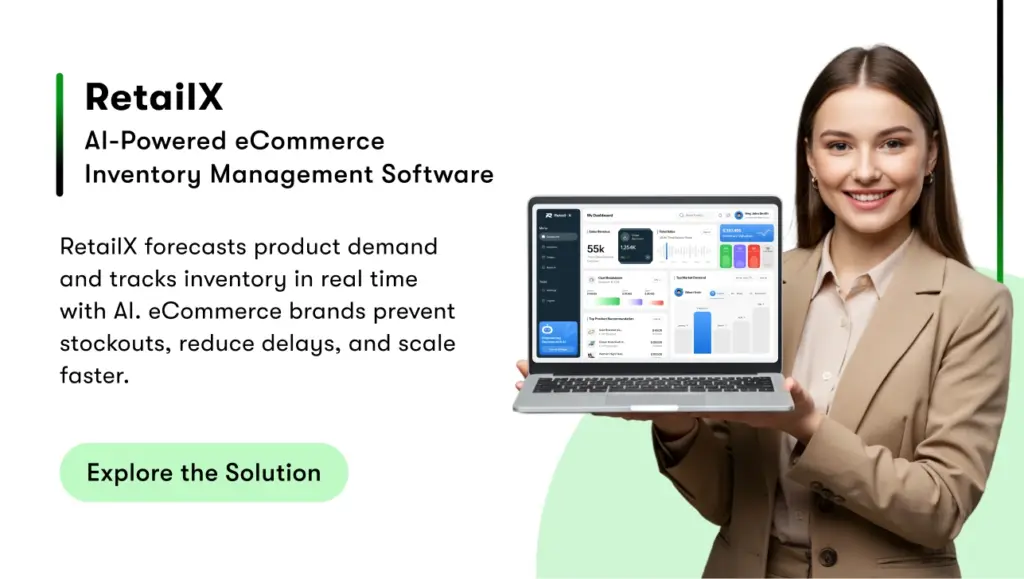
Why Partner with Kody Technolab for Predictive Analytics in eCommerce
Kody Technolab Ltd is a leading software development company in India that helps eCommerce brands build intelligent, high-performance platforms grounded in real business value. As an experienced eCommerce app development company, Kody specializes in delivering custom solutions that go beyond clean UI and fast load times, they engineer platforms that think, adapt, and scale.
Be it demand forecasting, churn modeling, or product personalization and dynamic pricing, Kody designs AI-powered Predictive Analytics in eCommerce systems that are organically integrated with your operational goals, KPIs, and workflows. Without using off-the-shelf plugins or black-box tools, they develop custom machine learning architectures based on actual customer data, mapped to your product catalog, sales funnels, and business objectives.
Whether you’re a growth-stage company or an enterprise-scale brand re-imagining legacy infrastructure, Kody’s strategy is meant to enable you to build smarter, not merely faster. If you’re ready to make data into action and predictive intelligence a fundamental part of your growth stack, Kody Technolab Ltd is the partner that can make it happen.

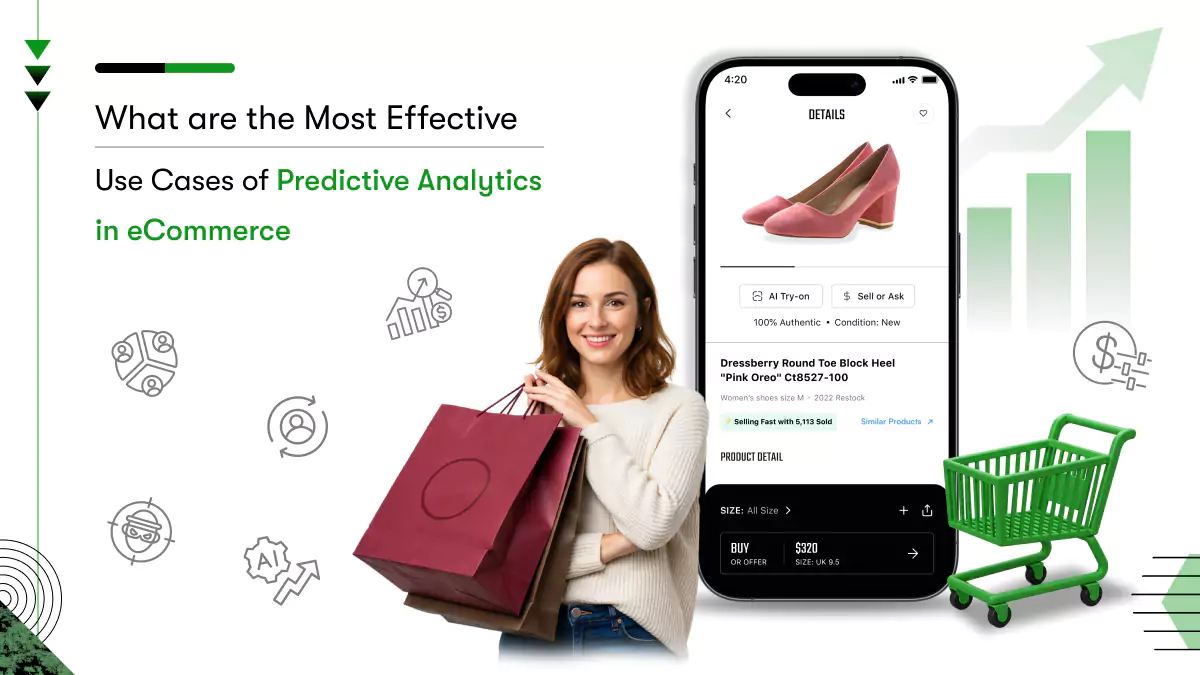


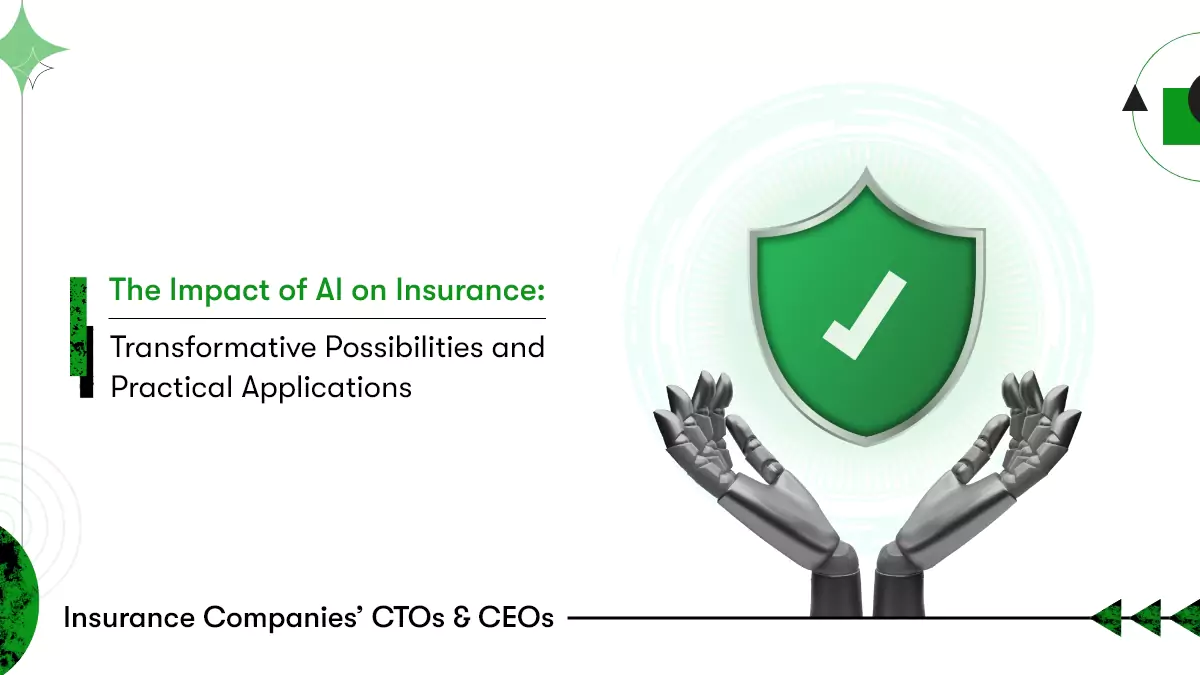

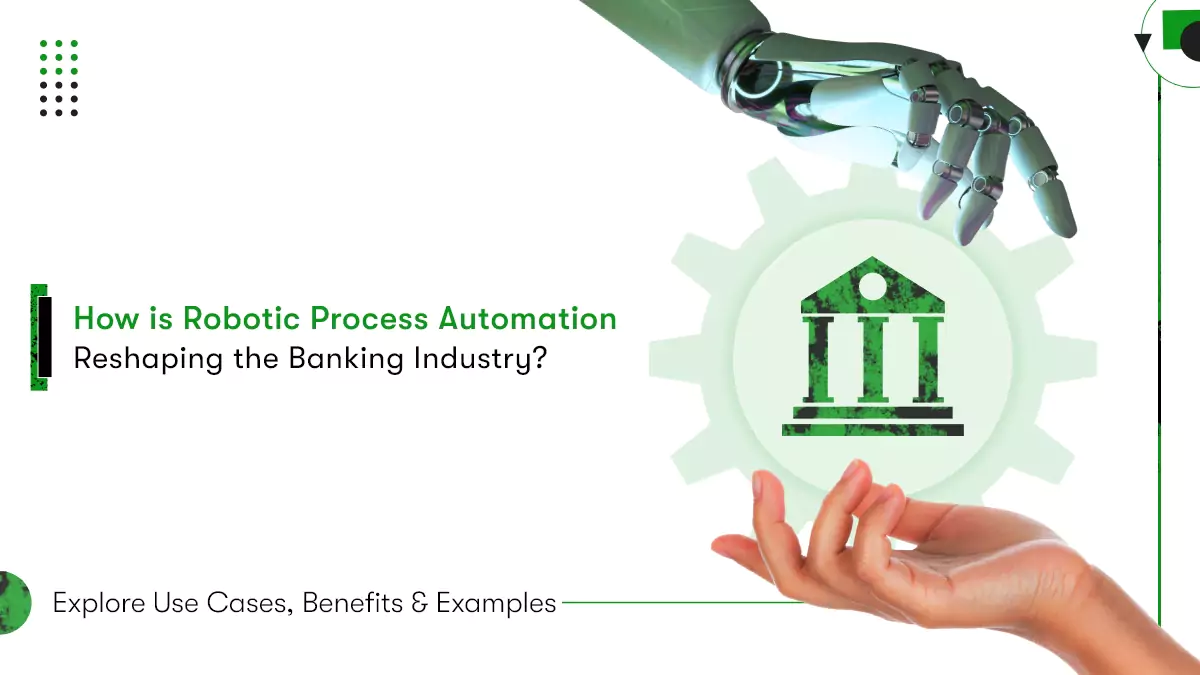






 Contact Information
Contact Information